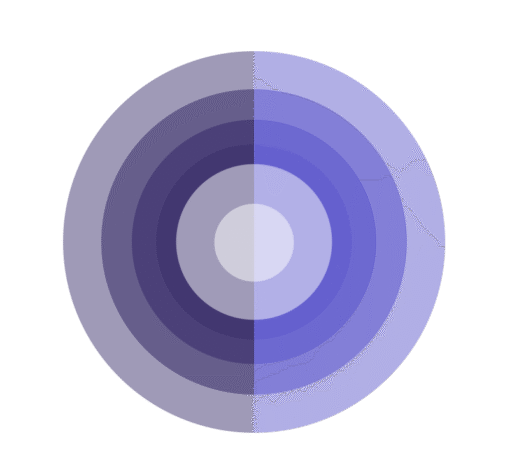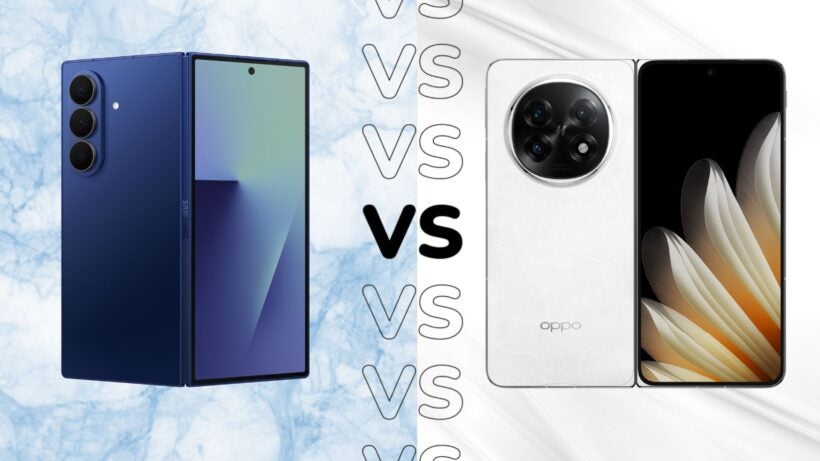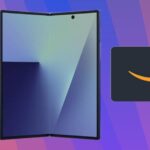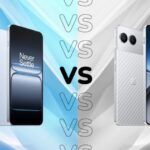
The Samsung Galaxy Z Fold 7 is here to challenge the ultra-thin Oppo Find N5 for dominance in the book-style foldable category.
Both smartphones boast the exact same impressively slim dimensions – 4.2mm unfolded and 8.9mm folded – but they differ widely in various aspects, from screen technology to camera prowess and even elements like battery life and charging.
If you’re curious, here’s how the Samsung Galaxy Z Fold 7 compares to the Oppo Find N5 based on our hands-on first impressions with both foldables.
Pricing and availability
The Samsung Galaxy Z Fold 7 is available for pre-order right now ahead of its release on 25 July 2025, and it’ll set you back £1,799/$1,999 for the 256GB model. 512GB and 1TB models are also available at additional expense.
The Oppo Find N5, despite its ‘global’ launch, is only available in select parts of Southeast Asia. You can import it to the UK, US and EU, but be aware of additional costs and taxes associated with doing so.
Both foldables are equally thin – but the Galaxy Z Fold 7 is much lighter
Foldable phones are often criticised for their bulk, but both the Samsung Galaxy Z Fold 7 and Oppo Find N5 have made impressive strides in this department. In fact, before the release of the Fold 7, the N5 was crowned as the ‘thinnest foldable’ around – though that has since been stolen by the Honor Magic V5.

Unfolded, both handsets measure just 4.2mm thick, and when folded, they’re a matching 8.9mm. That means that neither device will feel unwieldy in the hand or pocket, at least in terms of thickness.
Where Samsung pulls ahead of Oppo is weight. The Z Fold 7 tips the scales at 215g, making it noticeably lighter than the Oppo Find N5’s 229g and actually lighter than Samsung’s 218g Galaxy S25 Ultra. While 14g might not sound like much on paper, it’s a difference you’ll feel during extended use, especially when holding the phone one-handed or carrying it in a pocket.

Samsung’s use of an Advanced Armor aluminium frame and Gorilla Glass Victus Ceramic 2 likely helps keep the weight down, while Oppo’s titanium alloy hinge and larger battery likely contribute to its extra heft – but more on the latter a little later.
The Oppo Find N5 has bigger screens
Screen size is one of the key differentiators between book-style foldables – especially as much of the current crop are nicely thin and light. In this department, it’s Oppo that has the edge.
The Find N5’s main foldable display measures 8.12 inches, slightly larger than the Z Fold 7’s 8-inch panel. Oppo also offers a higher resolution at 2248 x 2480 pixels, resulting in a sharper 412ppi pixel density compared to Samsung’s 1968 x 2184 and 368ppi.

Elsewhere, both main screens sport LTPO-enabled OLED tech with 120Hz refresh rates and support for HDR10+, but Oppo adds Dolby Vision and HDR Vivid for extra punch.
It’s a very similar story when it comes to the cover screens. Oppo’s measures in at 6.62 inches with a 1140 x 2616 resolution, while Samsung’s is 6.5 inches at 1080 x 2520. Both are protected by toughened glass – Nanocrystal Glass for Oppo, Gorilla Glass Ceramic 2 for Samsung – and both offer 120Hz refresh rates.
The Galaxy Z Fold 7 sports a custom version of the Snapdragon 8 Elite
Under the hood, both foldables are powered by Qualcomm’s impressively powerful Snapdragon 8 Elite chipset – but Samsung’s chipset is a little different. It’s actually a custom version of the chipset dubbed the Snapdragon 8 Elite for Galaxy and offers slightly higher clock speeds on both the CPU and GPU for a little extra grunt.

Regardless, expect top-end performance from both foldables, especially when paired with a healthy amount of RAM – though the exact amount depends on the storage option you go for. Both phones offer 256GB, 512GB and 1TB storage options and either 12- or 16GB of RAM.
With Samsung’s foldable, 16GB is exclusive to the 1TB model, while Oppo offers it with both the 512GB and 1TB options.
The Galaxy Z Fold 7 has a higher-res main camera – but the Find N5 has better zoom
Camera hardware is another area where the two foldables take slightly differing approaches.
Samsung goes all in on resolution with the same 200MP main camera as the Galaxy S25 Ultra that should deliver a massive boost to overall detail. Oppo, on the other hand, offers a 50MP main camera, though it’s paired with Hasselblad colour calibration and a colour spectrum sensor for more accurate, natural-looking photos.

When it comes to zoom, however, Oppo takes the lead. The Find N5 features a 50MP periscope lens with 3x optical zoom compared to Samsung’s 10MP 3x telephoto. Both offer OIS, but Oppo’s combination of a higher resolution lens and more advanced periscope technology means it’ll likely take a better shot at more extreme levels of zoom.
Both also include ultrawide cameras – 12MP on the Z Fold 7, 8MP on the Find N5 – with Oppo offering a slightly wider 116-degree field of view.
Video capabilities are strong on both, with Samsung supporting up to 8K@30fps and Oppo offering 4K@60fps with Dolby Vision support.

Selfie cameras are similar, though Samsung’s are higher resolution at 10MP versus Oppo’s 8MP. Samsung has also finally ditched the poor-quality under-display camera for a regular selfie camera, which should result in big improvements over the Z Fold 6’s equivalent.
The Oppo Find N5 has a much larger battery
Battery life is often a concern with foldables with such large screens to power, but Oppo is leading the fight with its 5600mAh cell – a significantly larger battery than the Z Fold 7’s 4400mAh cell, the same as the Z Fold 6 before it.
That extra capacity should translate to longer usage between charges, even with the larger, brighter screens.

Oppo doesn’t stop there either; it also packs faster charging than Samsung’s alternative at 80W and 25W respectively – though you’ll need a SuperVOOC charger to hit Oppo’s top speeds.
It’s a similar story when it comes to wireless charging, with the Find N5’s 50W compared to Samsung’s 15W, though again, you’ll need a SuperVOOC charger to take advantage of those super-fast speeds.
Early thoughts
With the Samsung Galaxy Z Fold 7 and Oppo Find N5, it’s clear that we’ve entered the era of ultra-thin foldables. At first glance, both devices push the envelope in terms of design and hardware, but they take slightly different approaches to doing so.
The Z Fold 7 stands out for its impressively light build, and the promise of a high-resolution 200MP camera is certainly intriguing – especially when foldables don’t have the best rep when it comes to camera tech.
Oppo, meanwhile, appears to be targeting power users with the Find N5, featuring larger, sharper screens, top-end performance, and a significantly larger battery. The Hasselblad partnership and periscope zoom lens could also make it a strong contender for mobile photography fans.
Of course, these are just first impressions based on brief hands-on time and specs. We’ll need to spend more time with both foldables to see how they perform in day-to-day use, how the software stacks up, and whether the hardware advantages translate into a better overall experience. Stay tuned for our full reviews.



